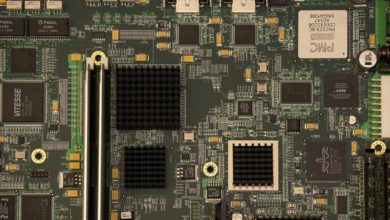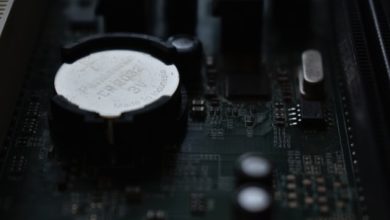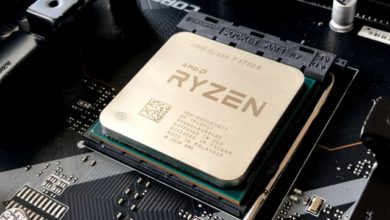Best SSDs for Video Editing:
Choosing one of the finest SSDs for editing is crucial since pairing a PC with one of the top Processors for video editing with poor storage is the quickest way to slow it down. Your CPU can handle trillions of cycles per second, yet it often wastes time while waiting for data from your hard drive. Hard disks are very slow because they include platters that must boot up and a read/write arm that must physically navigate to the data sections you’re looking for. A nice solid drive is required for best performance (SSD). The greatest SSD for video editing accomplishes more than you might expect. SSDs guarantee that your videos load as quickly as possible, and they also improve the performance of Windows. You might not need the quickest SSD in the world to get the task done at the moment. Video editing will exploit these rapid transmission rates for even faster load speeds once Microsoft publishes the DirectStorage API for Windows later this year.
Luckily, there seem to be a variety of storage media available specifically built for this function. They frequently have massive storage volumes and lightning-fast transfer speeds, as well as extra connection connectors for sd cards, monitors, or the ability to daisy, link many devices to maximize their utility. Solid State Drives (SSDs) and computer solutions are the two primary categories of storage systems suitable for video production. A compact SSD that fits into a wallet might be the greatest solution for people who need something they can take with them, particularly if they’re conducting infrequent video production on a laptop. Nevertheless, for larger productions, larger storage units can be preferable. That’s where desktop drives step in, which, despite their larger size, offer higher storage space, faster transfer speeds, and various connection ports not available on mobile drives.
Hard Disk Drives (HDDs), which consist of spinning metal discs inside an external case, are the most common desktop drive solutions. They’re dependable and quick, and you may pair them to build an inter RAID (redundant array of independent disks) array to boost performance or constantly transfer data to several or more hard drives to protect against data loss due to drive failure. On the other hand, moving parts can produce heat and, given the presence of necessary fans, might be noisy.
What to look for when buying SSD:
Solid State Drives (SSDs) have become the industry standard for customer storage and thus are found in the majority of the new Computers. SSDs, which began as pricey luxury items when they have first appeared on global markets many decades previously, have gradually grown more accessible and have gradually supplanted traditional HDDs (Disk Drive Drives) in recent years. How do you find the proper SSD for your requirements? Also, how do we even know what to search for to start with if you want to move to a solid-state drive (SSD) or update your existing one? This article will show readers what to check for when purchasing an SSD.
Drive capacity:
Because SSDs are so expensive, most people don’t buy 2TB SSDs to store everything. Most clients are currently unable to afford it. A “boot drive” is something that you could use smaller SSDs for. Your operating system resides on a boot drive. Despite the rest of your computer’s specifications, installing Windows on an SSD will make it start up much faster. You can also include some of the most often used programs and games.
The amount of data you can store on an SSD without needing a secondary storage drive (e.g., a cheap hard drive) is determined by your budget. The following are the typical capacities and memory expectations for each range:
Grade 1: 120-256 GB — Perfect for use as a flash drive on any computer. This is sufficient for surfing & word processing. For expanding your storage capacity, this works well with cloud storage.
Grade 2: 256 GB — This is a fantastic place to start if you have a large photo collection.
Grade 3: 512 GB – If you regularly play PC games or even have large videos and images to edit, this is the memory tier to start with.
Grade 4: 1 TB – This allows users to download a large number of AAA games at once or save a large collection of 4K movies.
Tier 5: 2 TB & Beyond — Excellent for almost everything, but quite pricey for the majority of customers.
Former:
When purchasing an SSD, look for a well-known, reputable brand such as Crucial, Samsung, or SanDisk. Purchasing an unknown, no-name SSD is a recipe for disaster, especially if the price is suspiciously cheap compared to comparably specced SSDs from rivals. Don’t take such risks using your os and private details.
Read-write speed and Bandwidth type:
One of the most technical characteristics of an SSD is read/write speed and is also the parameter by which you can measure sSDs’ efficiency. This is essentially the speed at which it reads and writes data. Its fast read speed enables rapid loading times for video games and video editing programs (and your system software as a whole, resulting in amazingly boot times). A high write rate means faster chores like uncompressing data with 7Zip.
Whereas all SSDs are quicker than HDDs, they don’t all read and write at the same rate.
SATA SSDs and PCIe SSDs are the two types of SSDs that are now available. The difference is in the amount of bandwidth used by the SSD, with PCIe being significantly quicker. The greatest SATA SSDs have a capacity of 500 MB or more (limited by SATA bandwidth), but inexpensive (and older) options will naturally have a considerably lower capacity. The motherboard’s PCI Express specification restricts the performance of PCIe SSDs (particularly NVMe SSDs). Speeds start at roughly 1 GB with last-generation NVMe SSDs. Some Drives can even reach as high as 7GB with PCI Express Gen4! This emphasizes the need to check speed specifications when purchasing SSDs.
Form factor:
SATA SSDs are available in the standard 3.5′′ or 2.5′′ sizes and the compact mSATA (outdated) and M.2 (current) sizes. If you don’t want to use M.2, many SATA SSDs come in 2.5′′ formats, which we suggest for optimal system compatibility. PCIe SSDs are available in M.2 form factors via NVMe SSDs and full desktop Computer adapters. Compared to NVMe SSDs, these extension cards are tremendously fast and highly expensive.
Should You Opt for an SSHD Instead?
An SSHD (Solid State Hard Drive) is a preferred alternative to an SSD for so many people. SSHDs will employ a tiny amount of SSD storage as a buffer for the entire disc because SSD storage is continually more expensive than HDD storage. This won’t give you full SSD speeds, but it will give you a significant performance improvement over a conventional HDD, which is especially useful if you want to keep a media library without having to buy a separate disk drive.
Is A DRAM-Less SSD Superior or Inferior?
Although DRAM-less SSDs are far less expensive than regular SSDs, their lack of DRAM is a significant flaw. Due to the lack of dedicated RAM to help control the strain, a DRAM-less SSD will operate worse when tasking.
A DRAM-less SSD is a bad choice for video processing and other multitasking-intensive activities because of this, and you won’t save much money as a result of the compromise. However, a DRAM-less SSD is still superior to any HDD, and it can be used as a step up from SSHDs for even quicker boot or load speeds.
SSD Endurance Reliability:
The company’s assessment of total operating hours of product delivered calculated by the total of damaged units is known as Mean Time Between Failures (MTBF). Long MTBF is sometimes a good indicator, but it isn’t always certain that the item will survive that long. SSDs have a reliability rating of a couple of thousand hours or more. If you’re not sure how to tweak your SSD, go to Instruments to Tweak-SSD and Recover Speed on Your Computer for more information.
SSD trim assistance:
By clearing deleted files, TRIM assistance helps maintain SSD efficiency consistently over time. This method of trash collection in the background decreases delay and increases drive efficiency. The SSD TRIM can keep hold of the system in most recent Windows and Mac. However, if you want to use an SSD with an older operating system like Windows XP, you’ll need to buy a disc with the TRIM function built-in.
Ecc:
Error Correction Code (ECC) SSDs employ error fault detection codes to safeguard data from destruction. If you do have an option in terms of ECC, always choose SSD with ECC. Because the Error Correction Code isn’t required, cheaper SSDs frequently don’t have one. To achieve such data security features, you might need to hunt for a good SSD.
SSD Brand, Guarantee, and Support:
SSDs are still a new technology; they are not as reliable as HDDs. SSD companies are constantly striving to improve both the hardware and firmware. When choosing an SSD, it’s best to go with the most up-to-date technology and a well-known brand for longer life and better performance. Derived from the experience and customer feedback, we’ve listed a few SSDs. If you’re concerned about losing your data, use caution while purchasing SSDs. To choose the proper drive, look for a decent brand, new technology, and read reviews. Also, seek reputable brands that offer data protection through extended warranties. Even though they have limited capacity, Intel Optane SSDs come with a 5-year guarantee.
Price and Spec Comparison;
Pricing is one of the most important variables in SSD choice, at the risk of seeming apparent. SSD prices, on the other hand, fluctuate often. By the time you read this, an SSD we recommend could be far cheaper than it is today.
Instead of suggesting certain SSDs in specific price brackets, this article is going to give you a great tip for purchasing SSDs and other computer components: check out PCPartPicker.
Our Top Picks
WD_Black SN850 | 1TB | 7,000MB/s read | 5,300MB/s write
Crucial P5 Plus | 1TB | 6,600MB/s read | 5,000MB/s write
Samsung 970 EVO Plus | 500GB | 3,500MB/s read | 3,200MB/s write
Crucial P2 CT1000P2SSD8 1 TB Internal SSD, Up to 2400 MB/s (3D NAND, NVMe, PCIe, M.2)
Kingston SSDNow
Crucial MX500 2 TB
Seagate Firecuda 530 | 2TB | 7,300 MB/s read | 6,900 MB/s write
FAQs:
What’s the distinction between NVMePCIe-based SSDs and SATA SSDs?
There’s not much of a price difference between the top NVMe SSDs and their SATA-based equivalents as NVMe SSD prices continue to decline. Why deal with antiquated SATA technologies if you can move forwards for fewer pounds than a similar capacity NVMePCIe disc (and four times slower)?
Several top editing and gaming SSDs still use the PCIe 3.0 connection; however, PCIe 4.0 drives are starting to appear on the market. Corsair was a forerunner in this space, and the newly introduced 500GB Samsung 980 Pro SSD performed admirably in evaluation, but the price offer isn’t the best. Whereas SATA has a detailed theoretical restriction of 600MB/s and PCIe 3.0 has a detailed theoretical limit of 4,000MB/s, newer PCIe 4.0 SSDs could double that to a max of 8,000MB/s. In the actual world, the highest speed of Gen4 drives is roughly 7,000MB/s, which is larger than the entire prior generation, which peaks out at 3,500MB/s.
What size SSD should I get?
The simple, rather blunder-prone response is: as big as you can handle. The bigger the capacity of an SSD, the faster it is. Since more storage dies plugged into the multi-channel memory module, you have more parallelism, which means better performance.
Typically, an entry-level SSD must have at least 512GB of storage space to accommodate your computer system’s overall network speed, with your most often edited videos. However, due to the rising size of the video, a 1TB SSD is becoming the minimum suggested. That’s also when the quality of the work begins to improve.
How many hard discs do I need to edit the video?
Many people just require one hard drive for video processing; nevertheless, two drives would be preferable. Whether you’re going to do a lot of video editing, particularly if you’re a hobbyist or beginning a new business as a videographer, you should at least think about a dual-hard drive arrangement.
Is the Samsung 970 EVO Plus a good investment?
There is no competition regarding whether an SSD or HDD is superior for video editing. The answer to the question “Is Samsung Evo 970 Plus Worth It?” is a big yes. When utilizing the Samsung 970 Evo Plus, video editing projects load faster in Adobe Premiere CC. The Samsung 970 Evo Plus ensures a smooth timeline playback regardless of video quality or size for 4K video playback speed. If your pc can support a dual-hard drive setup, the 970 EVO Plus is a good option. Let me use my video editing anecdotal experience. Usually, video editing PC featured the main drive that was a 250GB SATA 3 SSD and a backup drive that was a 6TB HDD. Sadly, the HHD began to fail, causing the entire PC’s efficiency to suffer. Many decided to replace their 250GB boot disk with a 1TB Samsung 970 EVO Plus NVMe M.2 V-NAND SSD when they replaced the storage drive. We can honestly say that this is the first time I’ve been blown away by a major performance improvement when upgrading a PC.
What kind of SSD controller should you get?
Consider the controller to be the drive’s CPU. It manages your readings, writings, and other important drive efficiency and management functions. It can be fascinating to delve into the details of individual controller kinds and specifications. For most users, though, knowing that, similar to PCs, more cores are better for greater, greater SSDs is sufficient. While the keyboard affects performance, unless you want to dive into the gritty details of how individual drives compare to one another, it’s better to look at the ratings and see how a memory generally works rather than concentrating on the controller.
Are there different speeds for SSD drives?
When comparing SSD speeds, it’ll become clear that there’s a lot of variety. A basic SSD can read sequence information at 550 MB per second (MBps) and write it at 520 MBps, giving you an idea of the performance differential, an SSD vs. HDD speed analysis may potentially reveal.
How long does a solid-state drive (SSD) last?
Furthermore, because SSDs are a newer technology, there isn’t much data on enduring them. However, according to some estimations, a standard SSD will live ten years under average workloads. This is a significant rise over the previous forecast of five to six years.
Is it worth it to upgrade to PCIe 4.0 for SSDs?
PCIe 4.0 SSDs are the best method if you want the absolute quickest drives available. They’re faster than any PCIe 3.0 drive, making massive data transfer for tasks like video editing a breeze. They’ll also be prepared for the future of gameplay in Windows 11, thanks to the DirectStorage feature, which takes the weight off the CPU and sends data straight to the graphics card, boosting speed and reducing, if not eliminating, load times in today’s new open-world games.
Is it possible to install a PCIe 4.0 SSD in a 3.0 slot?
Yes, you certainly can. Because the M.2 socket is the same for both interface versions, a PCIe 4.0 SSD will fit well in a PCIe 3.0 slot. They will likewise work flawlessly, except that the speed of the older interface will limit the Gen4 drive.
This is theoretically 4GB/s; however, due to numerous overheads, it is closer to 3,500MB/s. However, PCIe 4.0 SSDs are more expensive than PCIe 3.0 SSDs, so unless you expect to switch to a brought change soon, it’s generally best to remain with a more economical PCIe 3.0 drive.
Why invest in a new SSD?
SSDs can launch your computer in under ten seconds for MAC and Linux and somewhat longer for Windows. You could save at least 20 to 35 seconds in computer boot time by switching from a regular hard disc to an SSD.
Most of your apps will launch rapidly with SSD, and transferring and deleting files will be a joy. Before reading this post, we’re guessing you’ve already made it up in your head to change to SSDs. Once you’ve purchased an SSD, it’s a worthwhile read-up on the Dos and Don’ts of SSD to get the most out of it.
Why is NVMe preferable for video production than SSD?
One should use NVMe M.2 for faster loading speeds for video editing. NVMe technology allows SSD devices to read data up to 10 times quicker than traditional SATA 3 SSD drives. Regarding downloading effects and frames, the faster read speed will result in a noticeable change in real-world performance. NVMe’s faster read speeds aren’t transitory or throttled; you’ll get consistent read/to write rates for the duration of your video editing session. If you’re working with huge videos, you’ll need faster read/write speeds to avoid wasting time waiting for your processing timelines to load.
Is an SSD justified the extra money for video editing?
For a variety of reasons, SSDs are well worth the investment when it comes to video editing. But, above all, it’s all about speed. SSDs are far faster than HDDs, which can only read and write at roughly 150MB/s. 2.5-inch SATA 3 SSDs, on the other hand, will be more than three-and-a-half times quicker, with reading/writing speeds of up to 550MB/s. Even yet, it’s nothing in comparison with the NVMe drives that you can install directly on the computer’s hard drive. Just using the Samsung Magician program, which is available for freeOpens in a new tab. You can observe how well the Samsung 970 EVO Plus (NVMe M.2) performs on my computer. On my Seagate HDD, the software also ran a benchmark test. My mechanical Seagate HDD returned read/write speeds of 185/155 MB/s in the read/write tests. The Samsung 970 EVO Plus, on the other hand, managed 3,555/3,242 MB/s.
Conclusion:
Video editing is a time-consuming operation that necessitates a significant amount of computing power and computer performance. For high-quality video editors, time is valuable, and a slow computer can significantly slow down the rate at which you can edit videos. Your options should be clearer now that you know all of the key differences between SSDs and SSD kinds. Keep in mind that, although high-end ssds are nominally faster, they aren’t always faster in everyday work. If you’re seeking extraordinary performance for professional or fanatic purposes, an inexpensive standard drive with the space you want at an affordable price point is frequently the best option. When you upgrade to a contemporary SSD from an old-school rotating hard disc, you’ll notice a significant change. However, as with other PC technology, as you get closer to the top of the quality products, the value for common consumers starts to dwindle. The article mentioned above will give you a complete guide on which SSD is worth investing in.
Purchasing a new SSD is entirely dependent on your requirements. If you want quick access and more protection over personal data, you must seek certain storage types. On the other hand, the connection interface depends entirely on your System. Look for an appropriate port and get an SSD that fits. We suggest using your new Drive for System and editing apps plus your old SSD for storage in a Dual Controller Tuning. This ensures that your data is protected even if the SSD is misplaced. Every time keep a backup as a rule of thumb. You should not b taking a risk with your data. It’s always best to have a backup plan.




